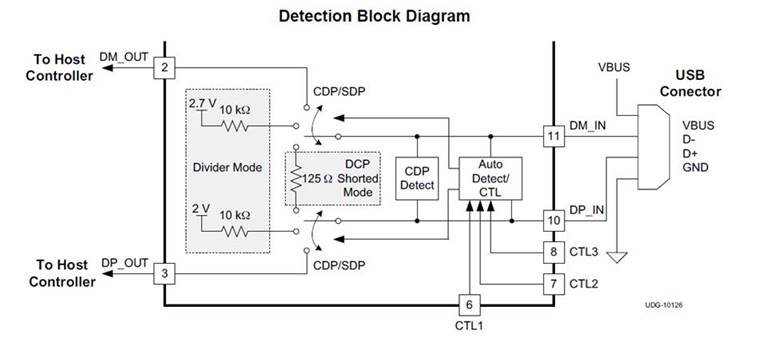- If the maximum charging current of the our USB port is 1.5A, shall I fix the state of the CTL1 – CTL3 as shown in the true table of the device?
- Can I have the explanation on how this IC works, starts from the attachment of the external portable device to the start of charging, and possibly communicate at the same time (if communication is possible during charging).
- Does the USB software of our product need to follow certain battery charging protocol to use this device?
4. Is there a simplified solution, if I just need my USB port to be able to communicate with external USB storage or mobile device, and charging the mobile device while communicating with the mobile device, with maximum current of 1.5A, and most importantly is without any software hand-shaking ?



